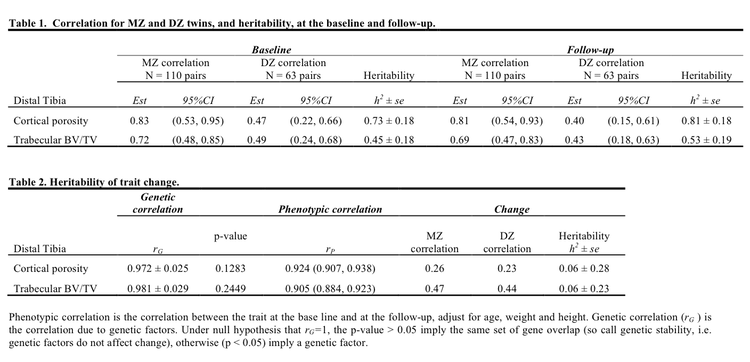Oral Presentation Annual Meetings of the Endocrine Society of Australia and Society for Reproductive Biology and Australia and New Zealand Bone and Mineral Society 2016
Menopausal bone loss is mainly cortical, not trabecular, and does not attenuate the heritable component of variance in this microarchitecture: a prospective study of twins (#148)
Introduction The population variances in trabecular and cortical microstructure are largely heritable. At menopause or shortly before, the rate of remodeling increases, more in trabecular than cortical bone so structural decay proceeds differently in the two compartments. As 80 percent of the skeleton is cortical, we hypothesized that cortical bone loss accounts for most bone loss and the differing rates of loss attenuate the heritability of bone microstructure.
Methods We prospectively quantified distal radial and distal tibial microstructure using high-resolution peripheral quantitative computed tomography (Scanco Medical and StrAx1.0 software) during 3.1 years (range 1.5-4.5) in 199 monozygotic and 125 dizygotic twin pairs aged 25-75 years at baseline in Melbourne, Australia.
Results Heritable factors accounted for ~80% of the variance in microstructure both before and after menopause, but not the variances in the amounts of bone lost during menopause (Tables 1 and 2). During the follow up, the annualized increase in distal tibial total cortical porosity was 0.44% in 180 women remaining premenopausal; 0.80% in 56 women transitioning from pre- to peri-menopause; 1.40% in 34 women transitioning from peri- to postmenopause; 0.83% in 118 women remaining postmenopausal (all p<0.001). Loss of trabecular BV/TV were -0.17%, -0.25%, -0.31% and -0.16% in the respective groups (all p < 0.001). Of the mean total bone loss of 207 mg from the distal tibia, 74% was cortical and 26% was trabecular. Of this bone loss, 94% occurred during and after menopause and only 6% occurred before menopause. Similar results were found at the distal radius.
Conclusion Over 90 percent of bone lost during advancing age occurs during and after menopause. Of this, most is cortical. Genetic factors account for the diversity in microstructural before and after menopause, but microstructural deterioration during menopause is non heritable.